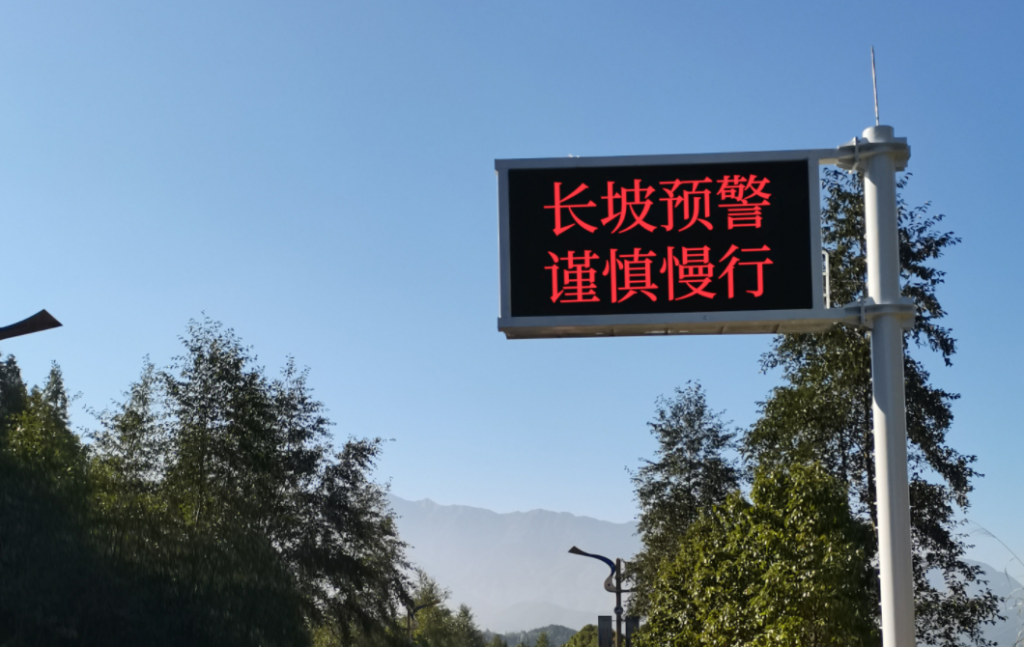City Traffic Gets Easier with LED Displays
In the era of rapid urbanization, urban transportation has become a key factor affecting urban development and the quality of life of residents. As roads get busier and more complicated, being able to get traffic information in real-time and knowing if it’s accurate and clear has become a must for smooth travel. Among all the technologies improving city traffic, LED displays, including Variable Message Signs (VMS) and highway displays, are playing a super important role and changing how we get around cities and on highways.

The Role of LED Displays in Traffic Management
1). Faster Traffic Information Sharing
Traffic LED displays, especially VMS, work really quickly. Unlike old-fashioned road signs that always show the same thing, these digital displays can update what they show at any time. For example, on a busy city street, a VMS can instantly show traffic data that sensors collect from all over the area. This includes details like how crowded the roads are, how fast cars are moving on different routes, and how long it will probably take to get somewhere. By giving drivers this up-to-date info, LED displays help them make better choices and avoid getting stuck in traffic because they didn’t know what was ahead.
2). Safer Roads
Keeping everyone safe on the road is a top priority, and LED displays help a lot with this. LED displays on highways, which are placed in important spots along the road, can flash warnings when there’s an accident or bad weather. For instance, during a heavy snowstorm, these displays can tell drivers that the roads are slippery, visibility is low, and suggest a safe speed to drive. In the city, VMS displays can also show warnings about roadwork, places where pedestrians cross, or sudden changes in traffic. Telling drivers this information early helps them drive more carefully and reduces the chance of crashes.
3). More Useful Information
Traffic LED displays aren’t just for traffic news. They’re like multi-purpose info centers. Besides traffic updates, they can show useful things like weather forecasts, local news, and public service announcements. For people commuting, this means that while they’re waiting at a red light or driving on the highway, they can find out what the weather will be like for the day or any important community news. This extra information doesn’t just make travel easier—it also makes the whole trip more helpful.
4). Helping Build Smarter Traffic Systems
Adding LED displays to traffic management is a big step towards making city transportation smarter. These displays can connect to a network of sensors, cameras, and data analysis tools. For example, data about how cars are moving at different intersections can be analyzed right away, and then the results can change what shows up on the LED displays. When everything works together like this, traffic management can be more flexible and adapt to different situations, which is really important for modern smart cities.
Giving Real-Time Road Updates with LED Displays
The way LED displays give real-time road updates is a smart but easy system. It starts with collecting data from many places. Traffic sensors in the road measure how many cars are on the road, how fast they’re going, and how full the roads feel. Cameras at busy intersections and along highways take pictures that can spot accidents, traffic jams, or anything unusual. Even the GPS in cars helps by sending location info.
This raw data then goes to a central traffic control center. There, special computer programs look at the info, find patterns, and figure out what’s really going on with the traffic. If the data shows that part of the highway is really backed up, the system can suggest other routes. After that, the useful info gets sent to the right LED displays, whether they’re VMS on city streets or big LED boards on the highway. These displays show the info in a clear way, using words, pictures, or even simple animations, so drivers can quickly understand and know what to do.
Using LED Displays to Ease Traffic Jams
LED displays can really help with traffic jams, though they’re just one part of the solution. By showing real-time traffic info, they encourage drivers to take less crowded routes. If a VMS on a main city road says there’s a big jam ahead, drivers can choose another street instead. When drivers change routes like this, it spreads out the traffic more evenly across the roads.
LED displays can also work with traffic lights. For example, if an LED display on the highway shows that a busy interchange is blocked, the traffic lights nearby can change to help cars go towards other exits. But to really solve traffic jams, we need to use LED displays along with other ideas, like getting more people to use public transportation, giving rewards for carpooling, and planning cities better.
LED Displays vs. Traditional Road Signs
Compared to old road signs, LED displays have a lot of advantages. Traditional road signs always show the same thing, so once they’re put up, you can’t change the info without replacing the whole sign. LED displays, though, can update instantly, so they can share changing information. A regular speed limit sign stays the same, but a VMS can change the speed limit depending on the weather or how much traffic there is.
LED displays are also easier to see. They can adjust how bright they are based on the light outside, so you can read them clearly during the day and at night. Traditional road signs rely on reflective materials, which don’t work as well in the dark or when it’s foggy, rainy, or snowy.
LED displays can show a lot more information, too. Traditional signs can only have simple symbols and words, but LED displays can show detailed route maps, traffic congestion maps, and even real-time public transit schedules. This makes them a more useful and efficient tool for managing modern traffic.
In short, traffic LED displays, including VMS and highway LED displays, are essential for today’s city and highway travel. Their ability to share real-time info, keep roads safe, and help build smarter traffic systems sets them apart from old road signs. As cities grow and traffic gets busier, LED displays will become even more important for creating transportation that’s easier, faster, and safer.
Conclusion
LEDA Display is one of top three VMS display manufacturer in China, we have advanced machines and a experienced team to guarantee high standard quality. Contact : judy@leda-display.com for more information.
Latest Articles
- LEDA LED Displays Gained Recognition from Senior Brazilian Engineers, Successfully Applied in Local Highway Projects
- LEDA VMS Display: Illuminating the Future of Traffic Management
- P10 Traffic LED Display
- LEDA P10 P16 P20 Outdoor Traffic Display Board Rear Service
- Unveiling the Ideal Highway LED Display Supplier: Your Comprehensive Guide




